20 Things to Know Before Moving to Austin [2024]

Live music, unbelievable food, endless sunshine, and a thriving tech market put Austin on the map as a desirable place to call home, and for good reason. Austin's reasonable cost of living and vibrant culture now frequently attracts transplants from California and New York who are looking for balance.
But what makes Austin so special? Should you consider moving to this major city with year-round live music? Here are 20 things to know before moving to Austin, Texas.
Moving to Austin
1. Remote Workers Choose Austin
Austin is home to South by Southwest and has regional offices for multiple Fortune 500 companies. Those include 3M, Apple, Facebook, Google, and Whole Foods Market. Government officials, college students, tech workers, musicians, and remote workers are all a part of the Austin scene.
In fact, Austin ranked #6 in our Best Cities for Remote Workers report. Its rising tech industry has led to it being nicknamed “Silicon Hills.” Remote workers love Austin for its affordable rent prices, cost of living, and walkability.
2. Other Texans Love Austin
According to our renter migration report, most of the people moving to Austin come from Houston, Dallas, and San Antonio. If Texans are considering the move to Austin, then it might be a great place for out-of-state movers to start as well.
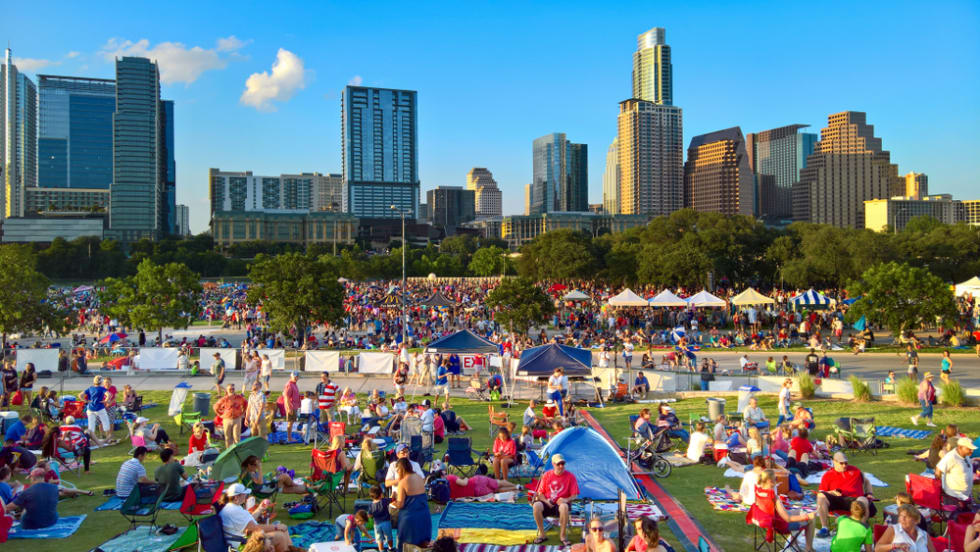
3. Austin Is Multilingual
Austin has come a long way since its founding in 1837. Since then, Austin has become a diverse hub of different industries. 32% of Austinites speak a foreign language. That’s higher than the national average of 21.9%. These languages are Spanish, Chinese (Mandarin/Cantonese), and Hindi. Austin is the capital of Texas.
4. Austin is Huge
With a population of 964K, Austin is the 11th most populous city in the US. It’s also the second-most populous state capital city as well as the second largest city in the state of Texas.
5. Cost of Living in Austin Is High
Compared to the rest of Texas, Austin is on the expensive side, but it's still affordable for a major city. Austin was only 7% more expensive than the average city in our database, and the average Austin resident spends $4,860 a month. Moreover, the median income in Austin is a healthy $80,854, as reported by the Austin Chamber of Commerce. By comparison, the median household income is $64,034 in the rest of Texas.
The median rent in Austin is currently $1,306 for a one-bedroom apartment, while the median rent on a two-bedroom is $1,590.
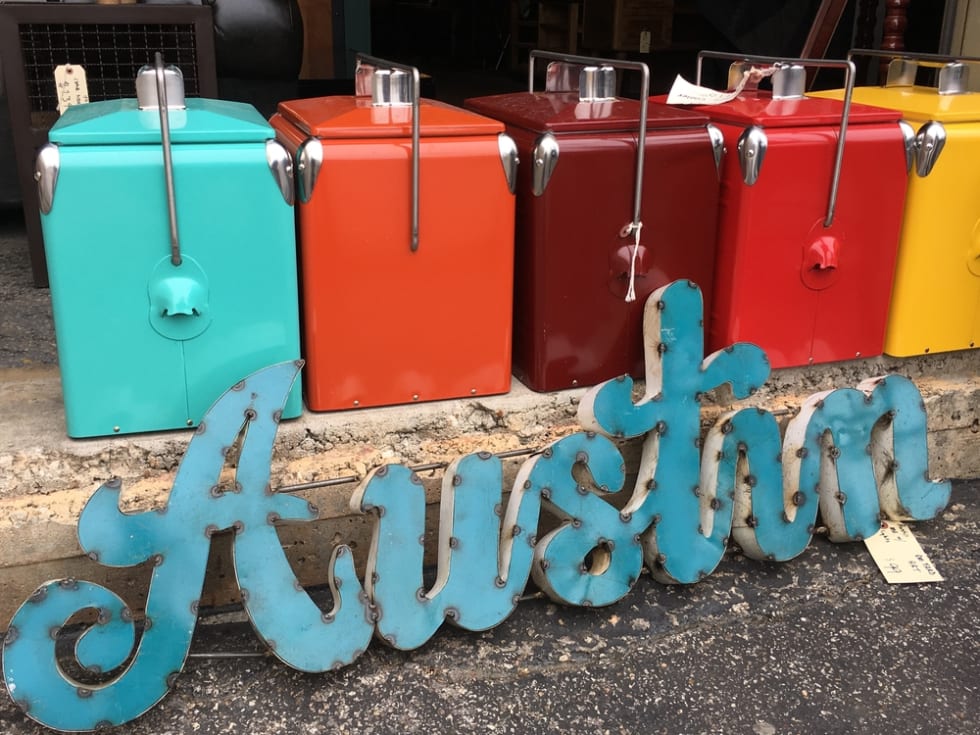
6. Taxes in Austin
A huge perk to moving to Austin is that Texas is very tax-friendly. For transplants, moving to Austin means you won’t have to worry about paying any income taxes.
Keeping that in mind, though, there are other taxes that help to balance out the lack of income in Austin. For example, both property taxes and sales taxes are relatively high in Austin.
Renters in Austin can anticipate paying 8.25% sales tax throughout the city, which is above the national average of 7.12%. But, overall, your paychecks will look much better in Austin!
7. Austin's Housing Market
The housing market in Austin has seen steady growth recently, with median home prices currently at $580,000. Year over year, Austin has seen a 22.7% growth in home prices.
Considering that Austin is one of the major tech cities in the country, these prices make the city a popular choice for young homebuyers. Other comparable tech cities include San Francisco, with median home prices currently at $1.3 million, Boston at $718,756, and New York City at $746,354.
8. Weather in Austin, Texas
Austin earned the nickname of "Violet Crown City" for its purplish light gliding over the hills on winter evenings. Weather in Austin also tends to be more moderate compared to other Texas cities like Houston and Dallas. The gentle rolling hills around Austin could help curb the heat in comparison to Texas' notoriously flat landscape.
According to TripSavvy, you can expect relatively moderate seasons in Austin, except for the scorching summer heat. Here's a breakdown of what to expect and how to plan:
- Fall is perfect for hitting the outdoors while dressed in layers in anticipation of a chilly day. September still feels like summertime with temperatures in the 90s and lows dipping into the 50s by November.
- Winter is sunny with averages in the mid to high 60s. Lows dip into the 40s. However, Austin locals should still wear a jacket and bring along an umbrella.
- Spring is humid with averages from the low-70s to high-80s and may require layers and a lightweight jacket.
- Summer is humid, hot, and requires swimsuits and sunglasses. Expect temperatures to soar into the upper-90s and beyond.
Whether you love the summer heat or will tolerate it if you must, plan on finding an apartment complex with central air conditioning and a swimming pool. Fortunately, most Austin apartment complexes offer amenities to beat the heat. They’re a must during the peak of Austin's summers.
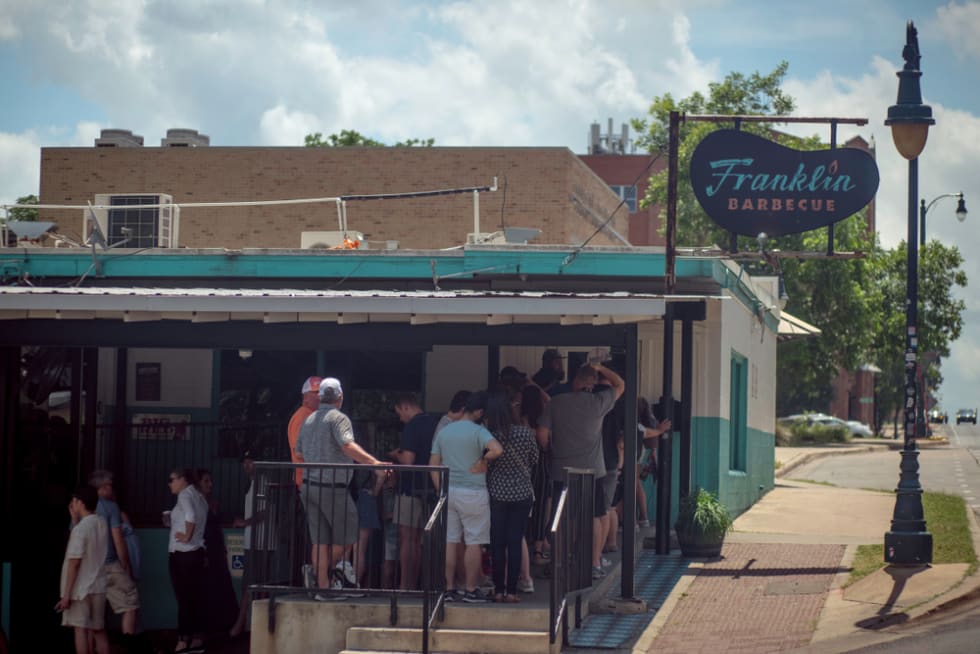
9. Austin's Food Scene is Foodie-Approved
Like most of Texas, moving to Austin is a foodie’s paradise. Barbecue and Tex-Mex are the local favorite cuisines, highlighted by the world-famous Franklin Barbecue. Do yourself a favor and make your first meal in Austin their brisket.
Food trucks are also on the rise in Austin. There are dedicated food truck parks to entice a playful palate.
We could dedicate an entire guidebook to all things food trucks, so there's no shortage of where to eat. For starters, sample the dozens of food trucks and trailers at 5000 Burnet Food Park with Hawaiian, Venezuelan, Latino, drip coffee, and more with a generous BYOB policy.
10. Public Transportation and Driving in Austin
Driving is still the norm in Austin, despite its reputation for traffic. Austin is frequently voted one of the worst cities for traffic.
It’s on a par with New York, Los Angeles, and San Francisco. Depending on where you live in Austin, you can easily double or triple your trip time.
There’s some traffic relief with public transit options that make it easier to get around. Hop on the Capital Metro for downtown and the greater Austin area. Single rides start at $1.25.
The Metro Rail runs through Downtown Austin and Leander throughout the week. It reaches Lakeline on Saturdays at $3.50 a ride.
A monthly pass on the Capitol Metro runs $41.25. That makes it a good deal for anyone who doesn't want to deal with traffic or is looking to save.
To get outside the city center or head to San Antonio, locals head to State Highway 130 where it's all about speed. The highway is known as the nation's fastest highway with a speed limit of 85 mph. It helps relieve congestion between Austin and San Antonio.
11. How Far Away is Austin from Other Texas Cities?
Austin is central to several other cities around Texas.
Austin to Houston
Houston is just over 165-miles from Austin, or about 2 1/2 hours via TX-71 and I-10 E. Limited Amtrak access connects Austin to Houston, though it only runs twice a day. Taking the train is relatively affordable and can help you avoid sitting in traffic, though it can take up to four hours. Vonlane, MegaBus, and Greyhound also shuttle between Houston and Austin. It’s usually under $30 per person and takes about three hours.
Austin to San Antonio
San Antonio’s famous RiverWalk is a popular weekend getaway for Austin locals. You're just 80-miles, or an hour and twenty minutes to San Antonio via I-35 S. Amtrak also offers direct service between San Antonio and Austin and takes about 2 ½ hours. MegaBus and Greyhound are inexpensive options to get between Austin and San Antonio with a price tag of $11 or less. Your bus ride is about an hour and a half.
Austin to Dallas
Dallas is just shy of three hours from Austin, or 195-miles via I-35N and I-35E N. Amtrak connects you between Dallas and Austin, although the trip can take up to six hours. Bus service through providers like MegaBus is available for under $25 per person and takes around five hours.
Austin to Waco
Waco is located an hour and forty minutes from Austin, or 102 miles via I-35N. FixBus and Greyhound offer bus service between Austin and Waco in about an hour and 30-minutes. Amtrak is another option, though it takes about 2 ½ hours to get there.
12. Austin Requires a Temporary Parking Permit for Movers
Before moving to Austin and hiring a moving company or truck, make sure you have your parking permit in place. Texans are required to secure a temporary parking permit for all movers. If a moving truck just shows up and tries to park on residential streets, they could get fined or asked to move.
Save yourself the headache and secure a permit through the Texas Department of Motor Vehicles.
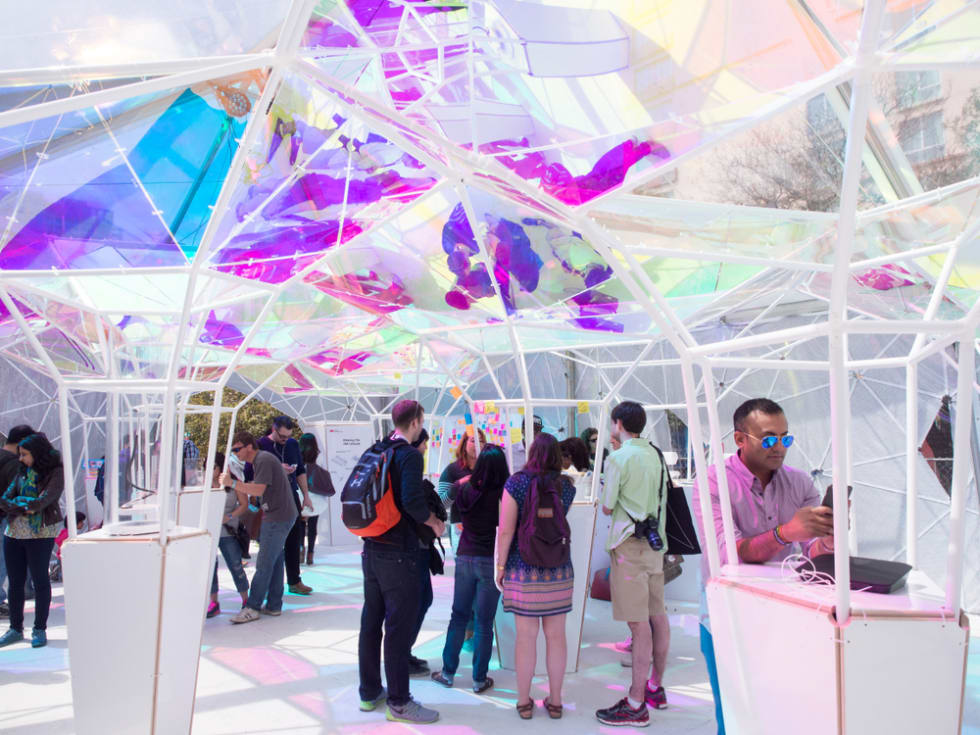
13. Austin is Home to Many Massive Festivals
Did we mention all the music festivals around Austin? South by Southwest, or "South By," is among the most highly anticipated and popular events around town. This 10-day event celebrates music, film, and tech and brings in hundreds of thousands of visitors.
The Old Settler's Music Festival and Austin City Limits also inspires music lovers to come out in droves.
Beyond the focus on music, Austin is also home to the Austin Food and Wine Festival. That represents the best restaurants and chefs from Central Texas and beyond.
For a cinema fix, Fantastic Fest features action, sci-fi, horror, and more. It’s one of the largest genre film festivals in the U.S.
14. Austin is the Live Music Capital of the World
Austin is celebrated as the Live Music Capital of the World and home to the longest-running music series in TV history, Austin City Limits at Moody Theater. Locals have no shortage of nightlife and live music to choose from.
South Congress Street boasts the Continental Club. It opened its doors in 1955 for an intimate music experience with just 200 people.
Over at the Mohawk, lively crowds fill the ground floor. You can also get some fresh air on the rooftop patio with a birds-eye space for viewing the show. But for all-night music, drinking, and dancing, Six Street attracts a younger crowd with traffic closed for pedestrians Thursday through Saturday nights.
South Congress or SoCo is home to music venues and restaurants. It’s one of the most photographed streets in the city with its vibrant art.
Beyond the nightlife, you can also hear live music at a lazy Sunday brunch or coffee shop. Live music really is everywhere when you live in Austin.
15. Austin Natives Know How to Beat the Heat
Austin summers can feel unbearably hot when first moving to Austin. However, there are still ways the natives beat the heat and have fun while doing it.
Make the trek to Barton Springs next to Zilker Park for a 3-acre pool with water sprouting out from underground springs. The water is refreshing but warm. That makes it a popular destination year-round with thousands of visitors.
You can also rent a boat at Zilker Park and glide out along the waters of Barton Creek and the Colorado River.

16. Austin is a College Town
Austin isn't just a playground for young professionals and millennials. It's also a beacon for the college-bound.
According to WalletHub, Austin is the second-best college town in the country. Aspiring students have their choice of the University of Texas, St. Edward's University, and Huston-Tillotson University, among dozens of others. With a quality education and backdrop to play hard, Austin is an irresistible choice for higher education.
Whether you're in college or not, the Texas Longhorns sports teams are the talk of the town. College sports are wildly popular around Austin, especially without a local pro team to speak of.
17. Austin is a Green City
Austin renters looking to live a sustainable and green lifestyle are in luck. Austin is the greenest city in Texas and among the top 20 in the United States. The city is also home to wind farms that contribute to over 15% of its energy. Many new buildings around Austin are built according to LEED green building standards, and all of the city's public buildings are powered by renewable energy.
18. Outdoor Recreation Opportunities Abound in Austin
Boat rentals, hiking, and afternoons of fun are also available at Lady Bird Lake. The reservoir was created in 1960 as a cooling pond for a power plant. Today, it offers 416 acres of recreation.
Beyond boating, Zilker Park also offers a playscape, disco golf course, volleyball, outdoor concerts, and more. f Also known as Covert Park, Mount Bonnell is regarded as the highest point in Austin at 775 feet. Take a hike and soak up the Colorado River's spectacular views, where tourists have been visiting since the 1830s.
19. Austin is Pet-Friendly
For furry-friend lovers, Austin is an excellent choice. Austin is known for being pet-friendly and has even been ranked #15 of the Most Pet-Friendly Cities in the country, according to WalletHub.
You can hit the town with your pet, with no shortage of activities to enjoy. Enjoy the beautiful Austin weather with your pet by hitting any of the countless dog-friendly parks and walking trails, including Red Bud Isle, Town Lake, or West Austin Neighborhood Park.
But, your options don’t stop there! Some might be surprised to find out that dogs are welcome in stores across town, including Sephora, Pottery Barn, and Apple, just to name a few.
Lastly, stop for a bite to eat or a refreshing drink at one of Austin’s many dog-friendly restaurants and bars, with some of the favorites being Fat City Stacks, Elizabeth St. Cafe, and Topgolf Austin.
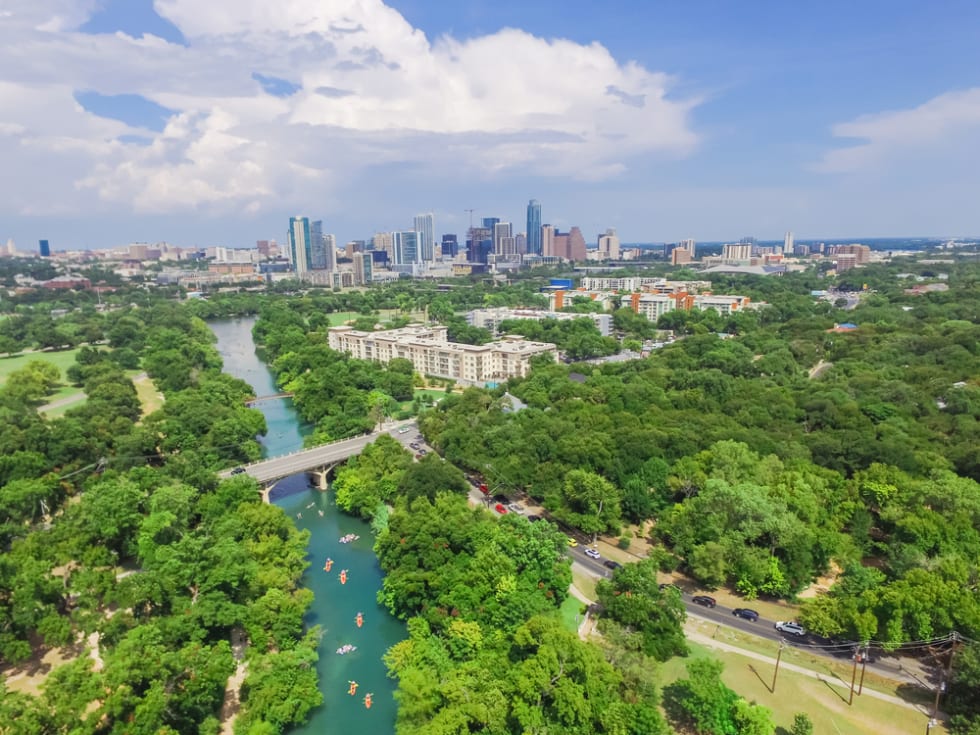
20. There are Still Affordable Neighborhoods in Austin
Austin's overall cost of living is affordable compared to major metropolises, but housing is still expensive. Downtown Austin will be one of the most pricey areas. However, it also offers incredible convenience and amenities.
Rents are rising quickly in the metro area, but there is still plenty of fun and affordable Austin neighborhoods. Here's a range of areas to consider, from pricey to reasonable and everything in between.
Downtown Austin
Downtown Austin is one of the priciest areas in the city. However, it also offers incredible convenience and urban amenities. The higher rent may be worth the trade-off for the fine dining, entertainment options, and high-tech job opportunities. You're also never far from live music and green space for outdoor recreation.
South Congress / East Austin
South Congress and East Austin are also popular spots to call home, although rents are climbing. However, that doesn't mean you can't find an affordable apartment when moving to Austin. East Austin is a diverse neighborhood with new apartment complexes, historic bungalows, and cocktail bars. You'll find plenty of Southern eateries and iconic hotspots like Franklin Barbecue.
North Austin / Westgate
Are you seeking an affordable and calm area to call home? Look for your next apartment around North Austin and Westgate. There, you'll find a quieter, more laid-back lifestyle and lower rents. These Austin neighborhoods are known for their ethnic diversity and mix of singles, couples, and young families. You'll find a combination of green space, local supermarkets, and restaurants. Locals also have easy access to Hwy 71.
Hyde Park
The tree-lined neighborhood of Hyde Park is situated near the University of Texas at Austin and attracts free-spirits and creatives. The area was once home to a horse racetrack and state fair. Today, you'll find a mix of Victorian architecture and Tudor revivals while strolling past pecan trees and towering red oaks. Hyde Park is also home to many independent boutiques, restaurants, and pubs where locals gather to catch up after work.
Clarksville
Live near Downtown Austin in Clarksville. Freed slaves established this historic neighborhood during the 1870s. The community features a trendy commercial strip along Lamar Boulevard and is home to cafes and boutiques. It's a laid-back neighborhood and pedestrian-friendly for those who want to get out and explore on foot.
Travis Heights
Travis Heights is situated near the lively South Congress area. The neighborhood boasts new construction, 1920s era homes, and winding streets. Spend the weekend exploring Blunn Creek Greenbelt wooded trail and connect to nearby neighborhood parks. Travis Heights boasts an artsy vibe with trendy galleries, restaurants, and waterfront strolls.
North Loop
North Loop was established after WWII as part of Texas' suburban boom. The quaint neighborhood is popular with nearby University of Texas college students and staff. It's also the perfect spot if you want to get out and walk more to urban amenities. A section of North Loop Boulevard boasts a pedestrian-friendly vibe with vintage shops and independent bookstores.
Read more about the best neighborhoods to live in Austin.
Guides to Living in Texas
Texas Guides
- Things to Know Before Moving to Texas
- Cost of Living in Texas
- Best Places to Live in Texas
- Cheapest Places to Live in Texas
Dallas Guides
- Things to Know Before Moving to Dallas
- Cost of Living in Dallas
- Average Rent in Dallas & Rental Price Trends
- Best Neighborhoods in Dallas
Houston Guides
- Things to Know Before Moving to Houston
- Cost of Living in Houston
- Average Rent in Houston & Rental Price Trends
- Best Neighborhoods in Houston
San Antonio Guides
Looking for an Apartment in Austin?
Moving to Austin or to a city nearby, Texas offers endless opportunities for work, music, outdoor recreation, and play. Ready to pack up for the live music capital of the world? Here's how to find an apartment in Austin.
Apartment List can help you find the best neighborhoods and apartments to fit your budget. If you're interested in living in short-term rentals, check out our short-term rental site, Sunny.
FAQs: What to Know Before Moving to Austin in 2022:
What's the weather in Austin?
Newcomers are surprised to learn Ausin gets an average of 300 days of sunshine per year. It is Texas, so you'll still get high, humid temperatures soaring into the 90s during summer. By fall, the temperatures dip back to the 50s, and winters see lows in the 40s. Spring is already humid again, and you may need a lightweight jacket over a short-sleeve shirt to fluctuate between the hot and chilly days.
What's the timezone in Austin?
Austin is on Central Daylight Time. When it's 1 pm in New York City, it's noon in Austin.
What to do in Austin?
There's always a party on Sixth Street in Austin with live music attracting visitors and locals to the Continental Club or annual South by Southwest. Austin is also known for the outdoors, with 300 days of sunshine a year. Locals bike through Lady Bird Lake trails or swim at Barton Springs Pool. In the evenings, crowds gather to witness the largest urban colony of bats at the Congress Avenue Bridge take flight.
What county is Austin in?
Austin is situated in Travis County and also serves as the county seat. Parts of Austin also extend into nearby Hays County and Williamson County. Austin also holds the distinction as the southernmost state capital of the contiguous 48 states.
What are the benefits of moving to Austin?
Austin is among the best cities for remote workers and boasts a growing tech industry. It's frequently called the Silicon Hills and attracts companies including Facebook, Google, and Apple. The population is diverse, from college students to CEOs, with 32% of locals speaking a foreign language. Beyond the booming economy, Austin also boasts fantastic weather and outdoor fun.
What are the pros and cons of living in Austin?
The biggest pros to living in Austin are the mild weather, job opportunities, diversity, and lack of personal or corporate income tax. Locals live in the middle of the Live Music Capital of the World, where you can hear tunes seven days a week. Although the cost of living is on the rise, it's cheaper than many metropolises. However, Austin's cost of living is higher than much of Texas, and the city's mantra, "Keep Austin Weird," is fading as the city rapidly swells with newcomers and sky high housing prices.
Where are the best places to live in Austin?
There's a neighborhood for everyone in Austin. Downtown Austin offers a bustling core with job opportunities, high rise apartment complexes, restaurants, galleries, and museums. Hyde Park is home to University Campus with a mix of students and staff. South Lamar is ideal for trendy restaurants and bars with a residential backdrop.
Read more about the best neighborhoods in Austin.
What's it like living in Austin?
Austin is the 11th most populous city in the US and the second-most populous state capital city. You’ll hear the global influence throughout the city, as 32% of locals speak a foriegn language. Austin also boasts a diverse hub of industry from cleantech to space technology. With 300 days of sunshine per year, there’s always a place to get outdoors for a bike ride or walk.
What are the taxes in Austin?
Like the rest of Texas, Austin enjoys several tax breaks. There is no personal or corporate income tax when you live in Texas. The maximum combined state and local tax rate in Austin is 8.25%.
What jobs are popular in Austin?
Austin is home to a booming tech sector and start-ups. You can also look for employment in advanced manufacturing, clean technology, creative and digital media, financial service and space technology. However, you don't need a job when you show up in Austin if you work remotely. The city is welcoming to the work from home revolution and digital nomads.
What universities are in Austin?
Before Austin was a bustling metropolis known for keeping things weird, it was known as a college town. College students attend The University of Texas at Austin to study everything from engineering to communication, biomedical sciences, and health related studies. Private institutions in Austin include St. Edward's University, Huston-Tillotson University, and Concordia University Texas.
What are things to do in Austin?
In a city known as the Live Music Capital, Austin is home to massive festivals from South by Southwest to Austin City Limits and live venus on Six Street. To soak up the sunshine, take a bike ride through Lady Bird Lake trails, take a dip at the spring fed Barton Springs pool or see the largest urban colony of bats at the Congress Avenue Bridge. The Lady Bird Johnson Wildflower Center offers stunning rails and Zilker Park is home to botanical gardens with opportunities to paddle board and canoe.
Share this Article




